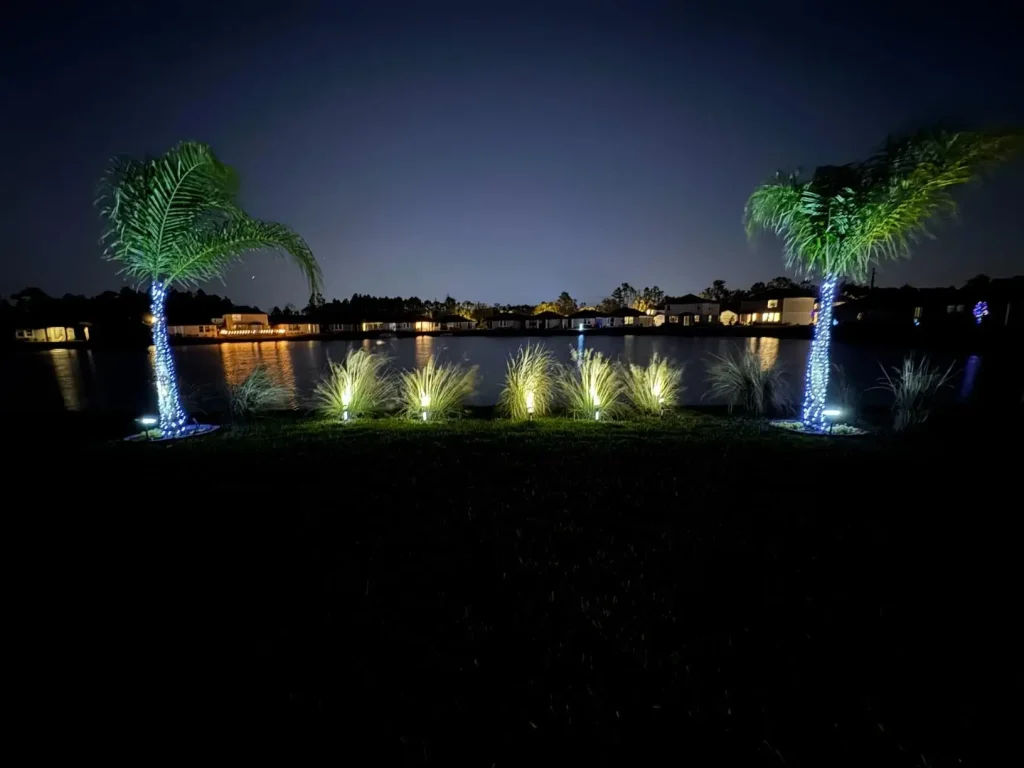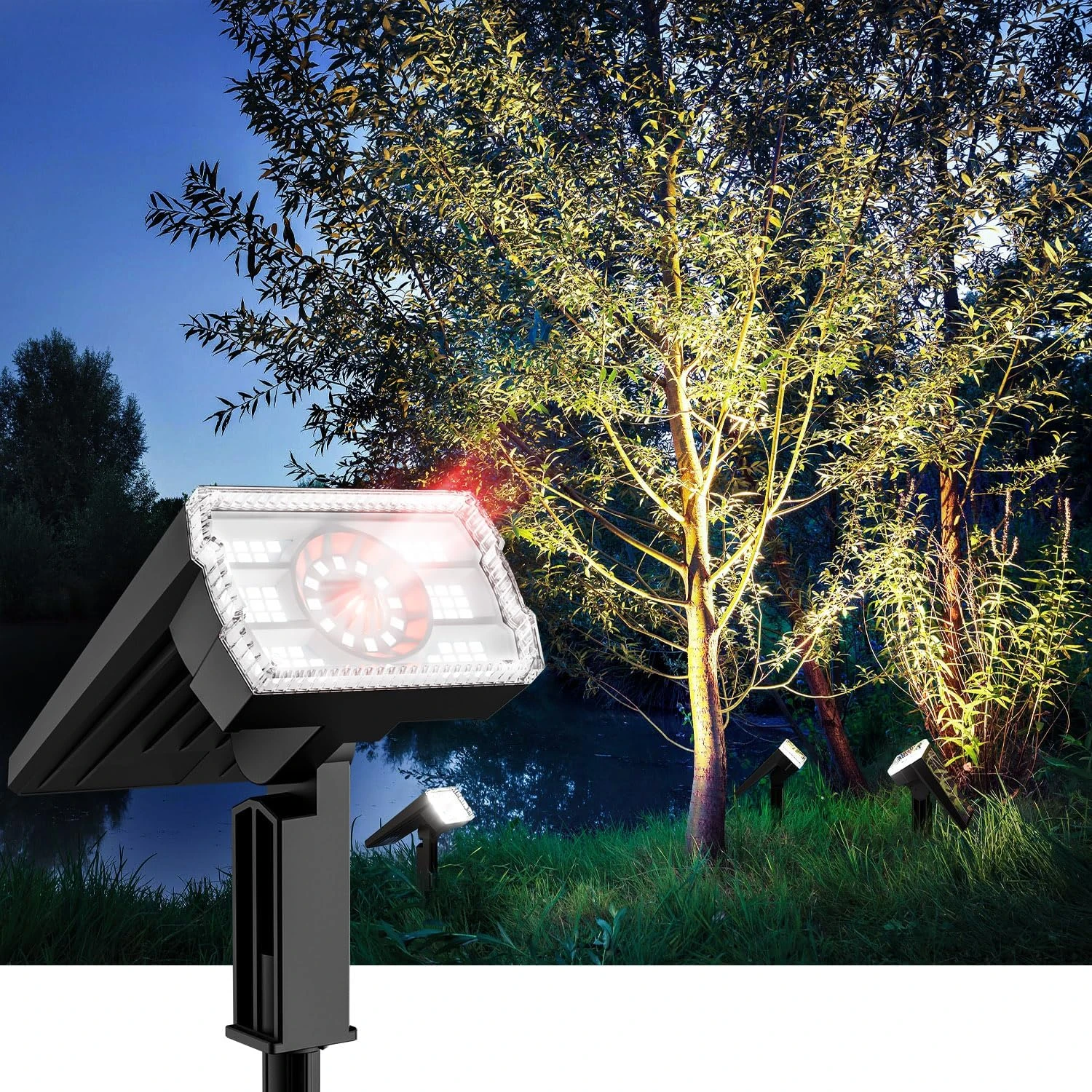Solar motion activated lights offer an eco-friendly, efficient way to illuminate outdoor spaces. These lights harness solar energy and use advanced sensors to detect movement, providing reliable lighting exactly when and where it’s needed. This guide explores the technology, applications, and best practices for maximizing the performance of solar motion activated lights, ensuring they meet diverse user needs in various settings.

Sensor Logic: Precision Control with Human and Light Detection
The core of solar motion activated lights lies in their sophisticated sensing technology, which combines human motion detection with light sensitivity for precise operation. Most models use passive infrared (PIR) sensors to detect heat signatures from moving objects, such as people or animals, within a specific range. These sensors work in tandem with photocells that assess ambient light levels, ensuring the lights activate only when it’s dark enough to require illumination.
This dual-trigger system enhances efficiency. For example, during twilight, the photocell prevents unnecessary activation if natural light is sufficient. When motion is detected in low-light conditions, the light activates instantly, providing bright illumination. This intelligent regulation minimizes energy waste, extends battery life, and ensures consistent performance. Users benefit from a system that adapts to environmental conditions, delivering light only when necessary.
Scene-Specific Sensing: Adapting to Yards, Hallways, and Corners
Solar motion activated lights are versatile, designed to adapt to various outdoor environments like yards, hallways, or wall corners. Each setting requires specific sensor configurations to optimize performance. In open spaces like yards, a wide detection angle—often up to 120 degrees—ensures broad coverage, ideal for illuminating large areas like driveways or gardens. For example, a homeowner in suburban Chicago might install these lights along a backyard pathway, with sensors set to detect motion up to 26 feet away.
In narrower spaces like hallways or corridors, such as those in apartment complexes in Seattle, a more focused detection range prevents over-activation from unrelated movements. Corner-mounted lights, common in places like Miami townhouses, benefit from adjustable sensor heads that allow users to direct the detection zone precisely, avoiding overlap with neighboring properties. By tailoring the sensing range to the environment, these lights provide targeted illumination, enhancing both security and convenience.
Installation Synergy: Optimizing Sensor Paths and Avoiding Obstructions
Proper installation is critical for the effectiveness of solar motion activated lights. To ensure optimal performance, users must consider the sensor’s line of sight and potential obstructions. For instance, placing a light near a tree or shrub in a Denver backyard could lead to false triggers from swaying branches. To avoid this, mount the light at a height of 6 to 10 feet, with a clear path for the sensor to detect motion.
Additionally, the solar panel must have unobstructed access to sunlight for efficient charging. In regions like Phoenix, where sunlight is abundant, positioning the panel southward maximizes exposure. In cloudier areas like Portland, users may need to angle the panel slightly to capture diffuse light. Pre-planning the installation site, considering both sensor and panel placement, ensures reliable operation and prevents performance issues caused by environmental factors.
Mitigating False Triggers: Handling Temperature and Light Interference
False triggers can reduce the efficiency of solar motion activated lights, but advanced models include features to minimize these issues. Temperature fluctuations, common in places like Minneapolis with its cold winters, can affect PIR sensors, as they may mistake warm air currents for motion. High-quality lights incorporate temperature compensation technology, adjusting sensitivity to account for environmental changes.
Light interference is another concern. For example, in coastal cities like San Diego, reflections from water or nearby car headlights might trigger the sensor. To counter this, some lights allow users to adjust sensitivity settings or include filters to distinguish between artificial and natural light sources. Regular maintenance, such as cleaning the sensor lens to remove dust or debris, also helps maintain accuracy. By addressing these interference sources, users can ensure their lights activate only when intended, preserving energy and reducing wear.
Brightness and Sensing Linkage: Gradual Illumination Adjustments
One of the standout features of solar motion activated lights is their ability to adjust brightness based on the duration of detected motion. This tiered illumination approach enhances both functionality and energy efficiency. For instance, a light installed in an Austin driveway might activate at 30% brightness for brief motion, such as a passing cat, and ramp up to 100% when a person lingers for several seconds.

This dynamic adjustment is particularly useful in high-traffic areas like a community pathway in Raleigh, where lights can remain dimly lit for ambiance and increase brightness only when significant motion is detected. Some models allow users to customize these settings, choosing between different brightness levels or activation durations. This flexibility ensures the lights meet specific user needs, balancing visibility with energy conservation.
Addressing Sensitivity Decline: Calibration and Maintenance Tips
Over time, the sensitivity of solar motion activated lights may decline due to environmental exposure or component wear. Dust, pollen, or spider webs on the sensor lens, common in rural areas like those near Nashville, can reduce detection accuracy. Regular cleaning with a soft cloth and mild detergent can restore performance. Users should inspect the lights every few months, especially after heavy storms or seasonal changes.
Calibration is equally important. After prolonged use, sensors may need recalibration to maintain optimal sensitivity. Many models include adjustable dials or mobile app controls, allowing users to fine-tune detection ranges or sensitivity levels. For example, a homeowner in Atlanta might adjust the sensor to ignore small animals while still detecting human movement. Additionally, ensuring the solar panel remains clean and free of debris maximizes charging efficiency, supporting consistent sensor performance.
Conclusion: Maximizing the Potential of Solar Motion Activated Lights
Solar motion activated lights combine cutting-edge sensor technology with eco-friendly solar power to deliver reliable, efficient outdoor lighting. By understanding the logic behind their dual-trigger systems, tailoring settings to specific environments, and following best practices for installation and maintenance, users can fully harness their potential. Whether illuminating a backyard in Dallas, a hallway in Boston, or a corner in Los Angeles, these lights offer a versatile solution for enhancing security and convenience.
Regular maintenance and periodic calibration ensure long-term performance, while smart features like adjustable brightness and interference mitigation make these lights adaptable to diverse needs. By investing in high-quality solar motion activated lights and following the guidance outlined here, users can enjoy a sustainable, effective lighting solution that meets their outdoor needs for years to come.


Leave a Reply